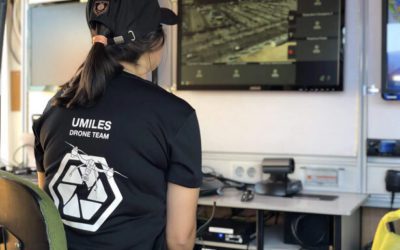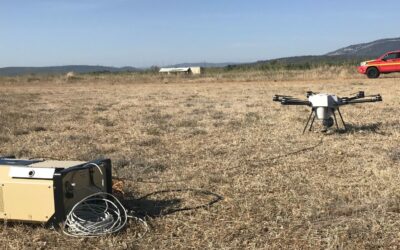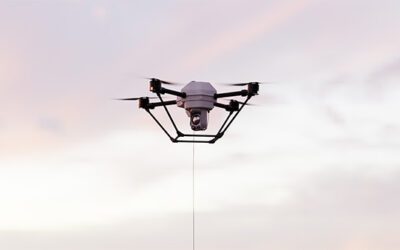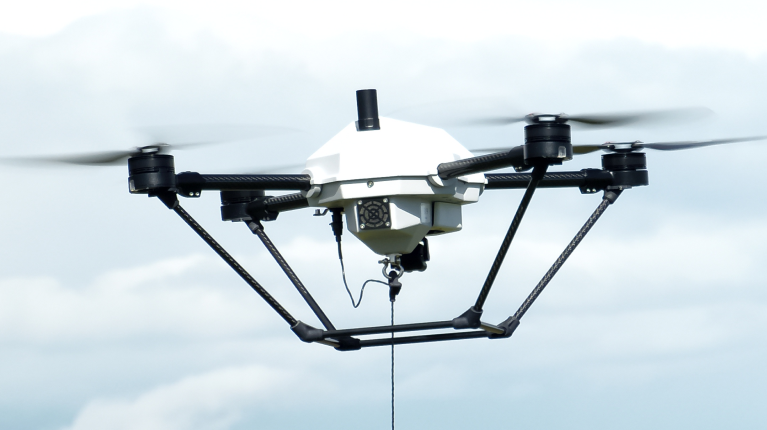Drones with Thermal Camera: Unveiling the World Through Infrareds

Antoine Bonnier
8 minutes
Thermal cameras unveil the hidden dimension of heat, harnessing infrared radiation to detect temperature variations beyond human vision. Drone with thermal camera find diverse applications across industries from structural inspections to aerial surveillance, or search and rescue missions. In this article, we explore thermal imaging camera technology, from the workings of infrared imaging to the benefits of integrating them with drones. Join us as we delve into the fascinating world of thermal imaging cameras.

Understanding Thermal Camera
Thermal cameras, also known as thermographic cameras or infrared (IR) cameras, are sophisticated devices designed to detect and visualize heat radiation emitted by objects. Unlike traditional cameras that capture visible light, thermal cameras operate within the infrared spectrum. This capability allows them to perceive temperature variations that are invisible to the human eye.
At the heart of a thermal imaging camera lies a specialized sensor known as a microbolometer. This sensor consists of thousands of tiny thermal detectors that convert infrared radiation into electrical signals. The camera then processes these signals to generate a visual representation of the temperature distribution across a scene. One commonly refers to this process as a thermogram or thermal image.
The weight of a thermal camera can vary depending on their design, features, and intended use.
Main types of thermal cameras for drones:
- Compact thermal imaging cameras: These are lightweight and designed for easy integration with drones. They typically weigh between 100 to 500 grams. For instance, the FLIR Thermal camera (Vue Pro), a popular model of thermal drone camera, weighs about 250 grams.
- Mid-range thermal imaging cameras: These cameras offer more features and better resolution, suitable for professional applications. Their weight can range from 500 grams to 1.5 kilograms. An example is the DJI Zenmuse XT2, which weighs around 600 grams.
- High-end thermal imaging cameras: Used for more demanding applications they may include additional sensors or features. They typically weigh from 1.5 to over 2.5 kilograms. For example, the FLIR RS8500 is a more robust model used in scientific research and can weigh around 2.3 kilograms.
Each type of thermal drone camera serves different needs. Lightweight options are ideal for small drones, commonly used for law enforcement operations. Larger UAVs can carry more advanced systems in industrial inspections or research applications for example.
Using a drone with thermal camera is ideal for aerial observation missions. This powerful combination provides essential data from above with minimal burden on the drone’s payload capacity. This integration facilitates extensive surveillance applications, from building inspections and electrical maintenance to search and rescue operations. These devices offer a non-contact and non-destructive method of detecting anomalies and monitoring thermal behavior.
Diverse Technologies in Thermal Cameras
Thermal cameras employ different technologies to capture and process thermal imagery, each with its unique advantages and limitations.
Among the most prevalent technologies is the uncooled focal plane array (FPA). This approach utilizes microbolometers, tiny thermal detectors sensitive to IR radiation, arranged in an array.
- Uncooled cameras: unlike cooled alternatives, uncooled FPAs do not require cryogenic cooling. They are more compact, energy-efficient, and cost-effective, however, they may exhibit lower thermal sensitivity and spatial resolution.
- Cooled thermal cameras: use a cooling system to keep the microbolometer at very low temperatures for better imaging. This cooling enhances the camera’s sensitivity and image quality. This technology is key for demanding applications where high performance is critical, such as scientific research, military, and surveillance. Nevertheless, cooled cameras tend to be larger, heavier, and more expensive than uncooled counterparts.
Each of these technologies has its unique advantages and limitations. Considering factors such as application requirements, budget, and environmental conditions is essential when selecting a thermal camera.
Drone with thermal camera: leveraging the benefits of Infrared Technology
A thermal camera for drone offers a powerful solution for surveillance missions requiring thermal imaging capabilities and aerial view points over wider areas.
For persistent operations, tethered drones can be an excellent choice as they offer extended autonomy and stable flights. Tethered drones can stay in the air in a stable position for hours because they receive power from a tethered station. In addition, data from the drone and camera can be quickly and safely sent to the command post using the tether.
The combination of thermal cameras and tethered drones unlocks numerous benefits across several domains:
- Improved situational awareness: Drones with thermal cameras can quickly spot heat anomalies like wildfires or industrial hotspots. This is crucial for search and rescue missions in low visibility.
- Improved Safety and Efficiency: Tethered drones with thermal cameras can fly for hours, covering large areas safely and efficiently. Operators can focus on their observation mission without time constraint. They rapidly obtain a comprehensive view of their perimeter and potential threats without exposing security teams to danger.
- Precise Data Collection: Tethered drones with thermal cameras offer precise control and stability, ensuring high-quality thermal imaging data with minimal motion artifacts. Accurate temperature measurements are important for crowd management or natural disaster response to make decisions quickly and safely. Precision is crucial for faster decision making.
- Extended Operational Capabilites: Tethered drones can fly for hours or days without needing to stop for battery changes. This makes them great for long surveillance missions, security around borders, or monitoring sensitive areas.
Drones with thermal camera are a powerful tool for capturing and interpreting thermal data across various applications and industries.
Tethered drones combined with these technologies offer the benefits of aerial imaging with longer flight times, stability, and accurate thermal sensing abilities. As technology gets better, combining thermal imaging and drones can make us more aware of our surroundings. It can also help us work more efficiently and safely.
For more information about Elistair and its products, please visit www.elistair.com and get the latest developments on Linkedin @elistair.









